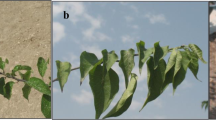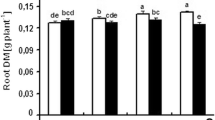Abstract
In leaves of Fraxinus excelsior L., malate and mannitol were characterized by 13C NMR spectroscopy and enzymatic specific assays as the major constituents of a soluble carbon fraction involved in an osmotic adjustment. During a summer drought where predawn leaf water potential of adult trees growing in a mesoxerophilic stand fell to – 4 MPa in August, malate and mannitol leaf contents increased by a factor of 1.8 and 2.2 respectively, compared to control trees growing on a flood plain. This drought stress led to concentrations as high as 280 mM and 600 mM for mannitol and malate, respectively. The effects of gradually developing water deficit were also studied in a semi-controlled environment in 3-year-old seedlings. When predawn leaf water potential reached -6 MPa, leaves displayed a low turgor pressure but stomatal conductance was still measurable. Malate and mannitol were also the main osmoticum involved. After rewatering, gas exchange capacities were largely restored. Altogether, these results show that the strong water-stress tolerance of Fraxinus excelsior is in part related to an accumulation of malate and mannitol.
Similar content being viewed by others
Author information
Authors and Affiliations
Additional information
Received: 3 January 1996 / Accepted: 19 March 1996
Rights and permissions
About this article
Cite this article
Guicherd, P., Peltier, J., Gout, E. et al. Osmotic adjustment in Fraxinus excelsior L . : malate and mannitol accumulation in leaves under drought conditions. Trees 11, 155–161 (1997). https://doi.org/10.1007/PL00009664
Issue Date:
DOI: https://doi.org/10.1007/PL00009664




